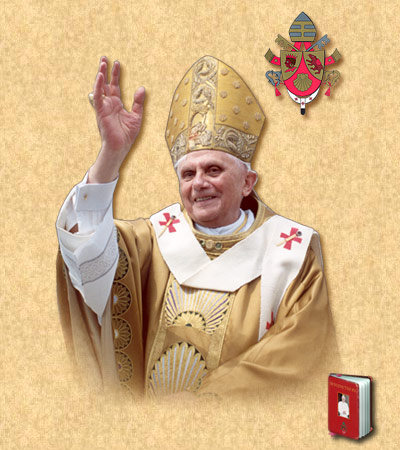to read part one, click here.
The practice of Forty Hours Devotion originated in Milan about the year 1530. Granted, prior to this time, the Church did have exposition and benediction, Eucharistic processions, and devotions to the Blessed Sacrament reserved in the tabernacle. In 1539, Pope Paul III
 responded to a petition from the Archdiocese of Milan asking for an indulgence for the practice:
responded to a petition from the Archdiocese of Milan asking for an indulgence for the practice:
Since our beloved son the Vicar General of the Archbishop of Milan, at the prayer of the inhabitants of the said city, in order to appease the anger of God provoked by the offenses of Christians, and in order to bring to nought the efforts and machinations of the Turks who are pressing forward to the destruction of Christendom, amongst other pious practices, has established a round of prayers and supplications to be offered by day and night by all the faithful of Christ, before our Lord's Most Sacred Body, in all the churches of the said city, in such a manner that these prayers and supplication are made by the faithful themselves relieving each other in relays for forty hours continuously in each church in succession, according to the order determined by the Vicar... We approving in our Lord so pious an institution, grant and remit.
While this pronouncement seems to be the earliest official approval by the Church of this devotion, the Forty Hours Devotion spread rapidly.

By 1550, both
St. Philip Neri and
St. Ignatius Loyola had also instituted this practice, especially for the reparation of sin.

Recognizing the tremendous graces offered through this devotion as well as the dangers threatening the Church,
Pope Clement VIII in his letter Graves et diuturnae (November 25, 1592) proclaimed,
We have determined to establish publicly in this Mother City of Rome an uninterrupted course of prayer in such ways that in the different churches, on appointed days, there be observed the pious and salutary devotion of the Forty Hours, with such an arrangement of churches and times that, at every hour of the day and night, the whole year round the incense of prayer shall ascend without intermission before the face of the Lord.
He also issued regulations for the devotions, which were later collected and promulgated by
Pope Clement XI in 1705, and known as the Instructio Clementina.
In our own country,
 St. John Neumann
St. John Neumann (1811-60), the fourth bishop of Philadelphia, was a strong promoter of the Forty Hours Devotion. While the practice had already existed in individual churches throughout the city (as well as in other places in the country), no organized, cohesive diocesan schedule for it had ever before been attempted. St. John had an tremendous devotion to our Lord in the Blessed Sacrament, and desired to foster such a spiritual life in his people.
Unfortunately at this time, a strong anti-Catholic sentiment plagued Philadelphia. During the
Know Nothing riots of 1844, two churches were burned and another was saved simply by the threat of gunfire. Some priests, therefore, advised St. John that the introduction of 40 Hours Devotion would only flame the hatred against the Catholics and expose the Blessed Sacrament to desecration. St. John was left in a quandary.
A strange incident occurred which helped St. John decide. One night, he was working very late at his desk and fell asleep in his chair. The candle on the desk burnt down and charred some of the papers, but they were still readable. He awoke, surprised and thankful that a fire had not ignited. He fell on his knees to give thanks to God for protection, and heard His voice saying, "As the flames are burning here without consuming or injuring the writing, so shall I pour out my grace in the Blessed Sacrament without prejudice to My honor. Fear no profanation, therefore; hesitate no longer to carry out your design for my glory."
He introduced the practice of 40 Hours Devotion at the first diocesan synod in April, 1853, and the first devotions began at St. Philip Neri Parish, an appropriate place since that saint had initiated the devotion in the city of Rome. St. John himself, spent most of the three days in the Church praying. No trouble ensued. St. John then introduced the program for the whole diocese, so that each parish would have Forty Hours Devotion during the course of the year. He composed a special booklet for the devotions and obtained special indulgences for the faithful attending them. The Forty Hours Devotion was so successful it spread to other dioceses. At the
Plenary Council of Baltimore in 1866, the Forty Hours Devotion was approved for all Dioceses of the United States.
In time the purpose for celebrating Forty Hours Devotion started to be transformed. This change is witnessed in 1560 by the bull promulgated by Pope Paul IV.

He states that the devotion is an imitation of the forty days of fasting of the Lord in the desert, and the time of unceasing prayer called for in scripture and by the early church. This transformation continued such that by the time of the eighteenth century this devotion became primarily Eucharistic in nature and centered on thanksgiving for the mystery and gift of the Eucharist.





























